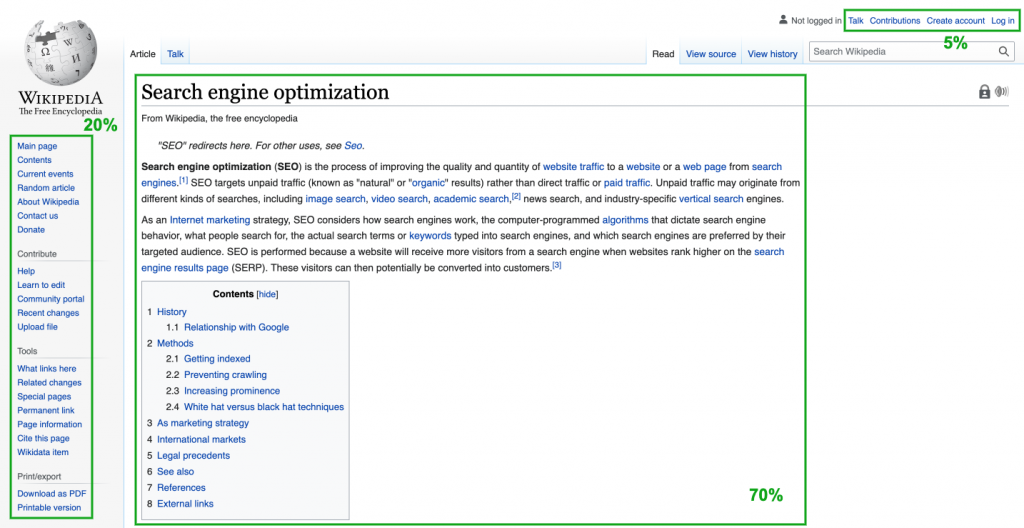Nicolas Piquero is a seasoned SEO with 6 years experience. He worked as an in-house, agency and freelance SEO, with various major european companies. Being both a yourtext.guru and babbar.tech power user, it was obvious that he could be an ambassador for babbar’s tools. So, being based in London, he is the first babbar ambassador for the UK.*
As an SEO, you already know what PageRank is, the algorithm that assigns a score of authority to a page on a website. You actually kind of use it every single day by assessing the “popularity” of a Web page or a whole domain.
That analysis allows you to make decisions in terms of link building strategies or internal linking, in order to optimise what we call link juice sharing, or PageRank sharing, and increase the authority of your pages and domain.
One thing you may not know is that this type of analysis is nowadays outdated…
Let’s see why in 5 points.
1. “Surfer model” is not a guy wearing a board short
PageRank has evolved over the years from a random surfer model to a reasonable surfer one in the way of weighting links in a content.
From the reasonable surfer model standpoint, a contextual link implemented in the body of a page, the plain text, gets more weight and value than a link in the sidebar, header or footer (sitewide links).
Here’s an example of what that weighting might look like:

From there, when it comes to link building, it is obvious that getting a backlink located in plain text brings more strength and value than a backlink implemented in the footer.
But what about the page that implements this link pointing to your Web page?
Should you care about it?
The answer is yes. Here’s why.
2. Are you topic-sensitive?
We’ve just seen the value of link weighting for a Web page. Let’s now jump into the importance of the page’s topic that links to you, so that you’ll figure out why “PageRank is dead”… to do so, let’s quickly turn back the clock.
In 2003, Taher Haveliwala, staff software engineer at Google, introduced a new vision of the PageRank that he called “Topic-sensitive PageRank”.

His definition of this is as follow:
“The original PageRank algorithm for improving the ranking of search-query results computes a single vector, using the link structure of the Web, to capture the relative « importance » of Web pages, independent of any particular search query. To yield more accurate search results, we propose computing a set of PageRank vectors, biased using a set of representative topics, to capture more accurately the notion of importance with respect to a particular topic.”.
From an SEO standpoint, the sentence “to capture more accurately the notion of importance with respect to a particular topic” actually means a lot and makes all the difference.
The relevancy calculation of a page includes a topic factor.
So, a link located in plain text gets more weight than a link located in the footer, and if that link points to a page that is in the same topic as the page it comes from, in other words, that is semantically close, you win!
We call it a “topical backlink”.
Let’s see how important it is and how it enhances your pages and domain popularity.
3. From backlinks to topical backlinks
There’s no point for me to convince you that getting backlinks is a key part of SEO strategies. In order to increase the authority of your page and rank higher, you need backlinks. That’s a fact.
However, when it comes to link building strategies, something you may not know is that being focused on the popularity metric itself (the one you can find in most of the tools on the market) is no longer relevant, and can even make you waste your time and money (in case you’re an SEO who buy backlinks, which is something I doubt as SEOs never do that 😉).
The way search engines work nowadays means that you’ll most likely get more strength from a page that has less authority but more semantic value than a page that has higher authority but that is classified in a different topic than your page is (we call that “induced strength” and I’ll be covering this in detail in a future article).
In other words, in order to get the most out of your link building strategy and increase the popularity of your page and domain, you want to get backlinks from pages and websites that are classified into the same topic/thematic as yourself. You do need topical backlinks!
And to do so…
4. Topical PageRank is the key
For years, as SEOs, we’ve been using the popularity metric, based on the initial PageRank calculation, on a regular basis.
The thing is: the popularity score we base our strategy on is not the real popularity!
In order to get the real popularity of a page or a domain, you need the Topical PageRank metric, not a score based on the outdated PageRank calculation.
That Topical PR will help you make smart decisions in terms of link building strategies by targeting pages and domains semantically close to you. The purpose being to boost your popularity and ultimately become trustworthy as well as a reference in your thematic.
Knowing your Topical PageRank will also help you figure out why you’ve been ranking at a certain position for months for a strategic page and why you’re still struggling to overtake your top competitors. How? By finding out that your popularity score you’re used to checking may be quite high but your real popularity (Topical PageRank) may be not high enough to compete with the top competitors.
You’re now about to ask “ok, but how can we do that? My favourite tool provides me with a popularity score, not a topical popularity one”.
The answer is…
5. Babbar at your service
Babbar is the 1st tool in the world that uses the Topical PageRank calculation like search engines do (we are talking about semantic, algorithmic model and real classifier here, not a random topical categorisation model of websites… I see you coming 😉). It is called the Semantic Value on the platform.
Using the Semantic Value, you’ll get the real popularity of your domain/pages (the one Google is actually using to classify and rank your website).
Comparing the Host Value (PageRank) to the Semantic Value (Topical PageRank), you’ll get a concrete overview of your real domain popularity.
In the example below, the Semantic Value (Topical PageRank) is lower than the Host Value (PageRank), meaning that this host is not as powerful as you may think. This is most likely due to the fact that the link building profile needs improvements from a semantic standpoint. Remember, getting backlinks, yes, but getting topical ones is the key. 🤓


Without having access to the Semantic Value that holds here a score of 64 (scale from 0 to 100), it would have left you with a good feeling about the authority of this host. Seeing the Host Value only (score of 83), which is the type of popularity score (PageRank) that you can find on most of the tools on the market, you would have been misled, because once again, that is not the popularity a search engine assigns nowadays to a host, domain or page.
Therefore, using the Semantic Value will allow you to benefit from actual metrics from actual search engine algorithms and help you understand that the page or domain you’re targeting or you’re getting a backlink from is most likely not as powerful as you thought. On the other hand, this metric will allow you to find valuable spots and make strategic decisions.
Bear in mind that working on your popularity is good, but working on your topical popularity is the key.
And ultimately, this is why I’m saying “PageRank is dead”… and “Topical PageRank is the key”!
* Nicolas Piquero est un référenceur expérimenté. Il a travaillé chez l’annonceur, en agence et en tant que freelance, pour plusieurs grandes entreprises européennes. Étant un power user de Yourtext.guru et de Babbar.tech, il était évident pour nous qu’il pouvait être un de nos ambassadeurs. Basé à Londres, il est donc le premier ambassadeur de Babbar pour le Royaume-Uni.

